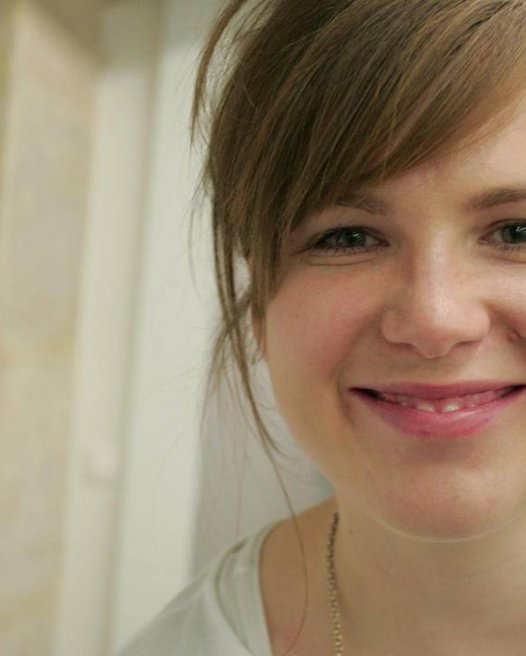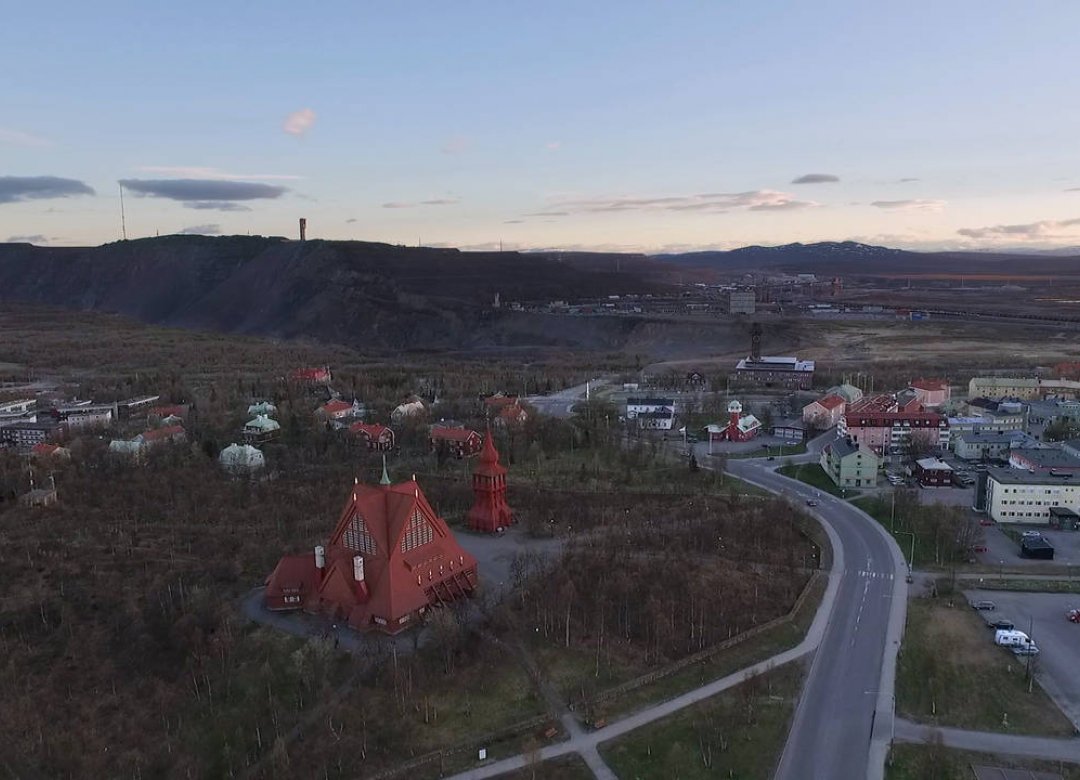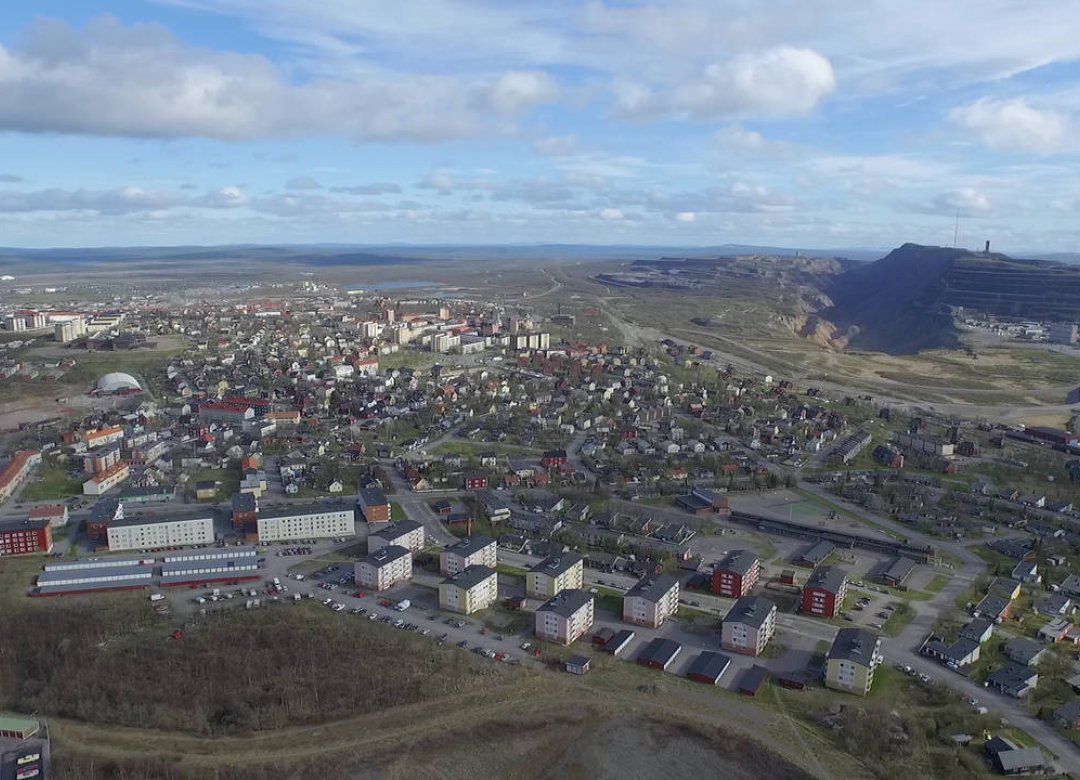Kiruna – A Brand New World was produced by Analog Vision, a production company founded by Veronika Kührová and Michal Kráčmer. After the experimental My Unknown Soldier, Greta Stocklassa’s directorial debut Kiruna – A Brand New World (read our interview with the director) is the company’s second documentary feature. Producer Veronika Kührová talks about the making of Kiruna and about documentary funding in Sweden and the Czech Republic.
 How would you describe Analog Vision? What was your vision when you founded the company?
How would you describe Analog Vision? What was your vision when you founded the company?
We founded Analog Vision because we wanted to do projcts for international audiences. Stories with an international overlap for Czech viewers. We just didn’t enjoy films that dealt with purely Czech topics. But we believed and we still believe that there’s a different way of doing things and that even a Czech filmmaker can delve into a non-Czech topic and still make it interesting for Czechs. Oddly enough, we’ve gradually reached a point where all of our filmmakers are foreigners and we really enjoy it. They have a different outlook, better work ethic and they don’t have the baggage of Czech patriotism. Today, filmmakers from abroad often reach out to us because they like our films and they like what we do. Of course, we don’t avoid working with Czechs but we simply like thinking about movies in an international context, creatively, and then trying to persuade the right people that this perspective would be valuable for Czech society as well.
What’s the production history of Kiruna? How did you get funding for your movie and what sources did you use?
Greta contacted us when she came back from one of her trips to Kiruna. She had some footage and a very clear idea of what she wanted to do. She was looking for production managers and a friend recommended my colleague Michal. We went through Greta’s materials and we were really intrigued, partly because Michal himself comes from the mining region of Most. We were onboard right away and applied for a production grant with the Czech Film Fund. Kiruna was the reason why we founded the company. The day we officially registered the company was also the day we filed the grant application.
Since Kiruna started out as a B.A. thesis film at FAMU’s Department of Documentary Film, we were still aiming low and applied for only CZK 650,000 (approx. EUR 25,000), which we eventually received. We felt ambitious about the project because the story seemed so complex. It soon became clear that our plans could come true. We were introduced to the famous producer Heino Deckert. Kiruna was then accepted to the IDFAcademy Summer School and received consultation with the American cinematographer Ed Lachman. We went to Docu Talents at the Karlovy Vary IFF, EBU TV in Sheffield, and the North Pitch Below Zero. At the Thessaloniki IFF’s Works in Progress presentation, we received a best project in production award. At the East Doc Platform, we got Sheffield Doc/Fest Award. In addition to the Czech Film Fund, we received support from the Filmtalent Zlín Foundation, and our participation at workshops was partly funded by the Audiovisual Producers’ Association.
 Did you receive any funding from Sweden?
Did you receive any funding from Sweden?
Logically, we kept trying to find a Swedish co-producer. We were very proactive, reaching out to potential producers, however, Sweden’s film funding system is a bit different compared to the Czech one. In Sweden, there are different regions and each has its own film fund. The State Fund that is run by the Swedish Film Institute (SFI) has no fixed application deadline; you can simply apply anytime. Once every two months, they review all the applications. We found out it was better to apply with the relevant regional fund that sets three application deadlines per year. It’s also better to apply with a company based in the region. Moreover, all the grant money must be then spent in that region.
It took us two years to find a Swedish producer. He was very excited about the project because – as Greta has mentioned before – everybody knows Kiruna but few people actually visit. Yet, every attempt to get support in Sweden failed because we were basically too cheap for Sweden. In order for Kiruna to remain a Czech-majority project, we needed approx. EUR 60,000 from Sweden, which is just too little for them and it doesn’t really pay off as minority co-production. According to the European Film Commission, Sweden is among the most expensive countries when it comes to film funding, while the Czech Republic is on the opposite end of the chart, especially if you’re making a low-budget movie.
Negotiations with the Swedish public broadcaster also took two years. We met with the documentary commissioning editors of SVT several times but in the end, it didn’t amount to anything. Every time, they claimed that the SVT started making several films with a similar topic so they couldn’t support our project. It took a lot of time and energy but we didn’t manage to get any agreement. For a long time, we couldn’t understand why. Greta is half-Swedish, we were shooting only in Sweden, all the protagonists were Swedish...even according to the SFI’s cultural test, we received 21 out of 26 points and co-production requirements specify you need to have at least 16 points. It all clicked at the premiere in Jihlava when we talked to Timo Vilgats, one of the protagonists. He said the SVT has never made any films about Kiruna and isn’t making any either. They’re not interested in anybody dragging up whatever is happening in the north. It was this simple but we didn’t know.
In the end, the film was made in co-production with Czech TV and we faced the opposite problem. We had to identify and explain all the Czech elements of the story so that Czech TV would be willing to support the project.
 At what stage did you join the project as a producer? Were you also involved in its development or script editing?
At what stage did you join the project as a producer? Were you also involved in its development or script editing?
We entered the project in early development, even though at the time we thought development was almost over and we could start production. In Sweden, for example, they usually say a project is in development until you start editing and then they apply to the SFI for a production grant. I think that the Czech Film Fund should do something like that. At EURODOC, Marianne Dumoulin, an experienced French producer, told me that documentary films can’t be rushed because even if you lose some protagonists, there’ll always be others. I really didn’t want to abandon the idea that Greta’s initial concept should change. But looking back, I must say that Marianne was right. With documentary films, you never know what’s going to happen. Initially, Greta had three protagonists but none of them lasted till the end. Gradually, we replaced almost all of the protagonists, which also affected the final budget and production plans.
We discussed the movie a lot, met with a lot of people but at some point, it became a bit too much. There were too many views on what to do, what to avoid, what to reshoot, etc. In the end, we were in fact lucky to be just a Czech project and to have the Czech TV join in at a time of Kiruna’s world premiere. We were free to decide its final shape. There was nobody to tell us we needed to change this for the Swedes or to change something else for the Czech TV.
What was most challenging about Kiruna for you as the producer?
Well, it was funding, of course. Sweden, and especially the mining region of Kiruna, is very expensive. You can get there only by plane and the closest city is four hours away by train. Each trip with three people (director, cinematographer, sound mixer) on a tight budget cost hundreds of thousands crowns. At first, we planned five trips but because of all the shifts with protagonists, it turned out to be ten trips in total, over one hundred shoot days. That can seem like a lot but Greta was making an observation documentary. You can’t just visit the place, you simply have to live there.
 How significant was having your movie at Visions du Réel in terms of its reception?
How significant was having your movie at Visions du Réel in terms of its reception?
Visions du Réel focuses a lot on creative documentaries. The competition section typically consists of films with an unusual main protagonist, such as concrete, wind, sand, home...or, in our case, a town. It was a great honor to be included in the main competition. It’s a rare thing for first-time directors. The Czech premiere in Jihlava was awesome as well. The audience was great and the atmosphere during the screening was just incredible. And again, the film was in the main competition. Not many films can say that.
How difficult is it to get a documentary film to audiences? Did you have specific plans for distribution and target audience?
One of our avid Czech fans has been looking forward to seeing the film and he was very disappointed to find out Kiruna would be released in fall next year. He was wondering why it was so difficult to talk to a few cinema operators and screen the movie, just like a friend of his has. Having a distribution and marketing strategy is very important and we always plan it ahead of time. It isn’t cheap, though, and without the Czech Film Fund’s distribution support, chances for theater release are much slimmer. Thanks to various VOD platforms, it’s faster and easier today for documentaries to get to viewers. On the other hand, people still like to talk about the movies and topics, which we saw in post-screening Q&A’s in Jihlava. It’s great that there are programs like KineDok that try to bring documentaries closer to people.
We always start thinking about our target group as soon as we start working with a project. This is really important in the development stage of any kind of film. Who is it for? Who is our audience? How do we get them to see it? Replies to these questions are required when you apply for development support with the Czech Film Fund and Creative Europe, so you really need to know why you want to make that particular film.
 Do you feel that the existing institutional support for documentary film in the Czech Republic is sufficient? What should possibly change?
Do you feel that the existing institutional support for documentary film in the Czech Republic is sufficient? What should possibly change?
It’d be great if we stopped viewing documentary film as a cheap genre. Documentary films don’t cost one million crowns. Every time we deal with the Czech Film Fund or Czech TV, they seem surprised that our budgets are so high. In the West, documentaries can cost as much as EUR 600,000 because people are used to paying for everything. Yet it’s almost compulsory here for post-production studios to be co-producers. When I attended the Emerging Producers workshop, our tutor Paolo Benzi was telling us about “a cheap documentary” that opened in Cannes (The Other Side, 2015). Then I looked up their budget, which was approx. EUR 400,000. Kiruna cost less than one-fifth of that but people were still wondering what made it so expensive. Fiction projects are given preference in distribution grants and they also receive more money, although the costs for marketing and promotion are usually the same.
It’s also important to stop requiring documentaries to deal with Czech issues. Every time we come up with a project, everybody starts asking: What’s Czech about it? What’s the Czech connection? Forget it, the Film Fund and Czech TV will never give you any money, it has nothing to do with the Czech Republic. I believe it’s really important to show other themes as well. Even Czech filmmakers can be interested in partly or purely international topics and they can use them to make an equally good film. Our obsession with ‘Czech elements’ should be done away with.
Read another interview from the series Czech Documentary Filmmakers Out in the World, with Barbora Jíchová Tyson.